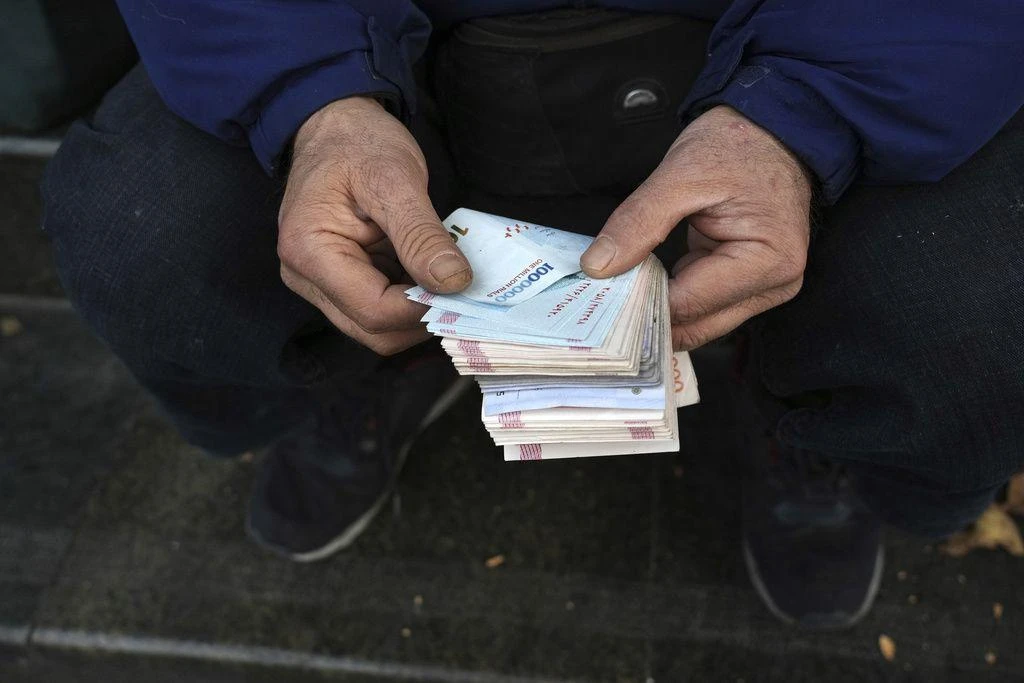Iran’s currency hits record low amid Nowruz celebrations

Iran’s currency hits historic low of 613,500 rials to the dollar during the Persian New Year celebrations
Iran’s currency took a nosedive on Sunday, hitting a historic low of 613,500 rials to the dollar, amidst the Persian New Year celebrations. As Iranians welcomed the Nowruz holidays, Tehran’s main exchange shops on Ferdowsi Street found themselves shuttered, exacerbating the already bleak economic landscape.
“The price is not real, the demand for purchasing dollars is very high, but there are just a few exchange shops open,” said Mohsen, a 32-year-old exchange shop employee, highlighting the impact of the holiday season on currency trading. Iranians, wary of potential repercussions, spoke on the condition of anonymity, underscoring the sensitivity surrounding discussions of the country’s economic woes with foreign media.
The two-week Nowruz holiday, a period synonymous with travel abroad, has intensified the demand for foreign currencies, particularly the US dollar and Euro. Mojtaba, a 49-year-old father, expressed astonishment at the plummeting value of the rial, lamenting, “The rial fell 5% compared to the last six days, while the whole country is on vacation!”
For Niloufar, 28, and her husband Behzad, 30, the currency slump has dashed hopes of enjoying discounted travel packages. “We’d booked a weeklong tour of Turkey at a discount rate, but were now looking at spending as much as full-price tour,” Niloufar remarked, reflecting the immediate impact on personal finances.
Beyond individual transactions, the exchange rate ripple effect extends to other sectors, including housing and rentals. The rial’s value stood at 590,000 to the dollar on March 18, the final workday before the Nowruz holidays began.
The deteriorating currency situation has eroded Iranians’ savings over the years, with the local currency now worth about one-twentieth of its 2015 value, when Iran signed the nuclear accord with world powers. Since then, the rial has experienced a staggering decline, plunging from 32,000 rials to the dollar to hundreds of thousands. Despite brief fluctuations, it has not risen above 439,000 since February 2023.
Discrepancies persist regarding official inflation rates, with the government’s Statistics Center pegging February 2024 inflation at 42.5%, while the Central Bank reports a figure exceeding 46%, leaving the public grappling with uncertainty amid economic turbulence.
Tensions with Western nations, compounded by the collapse of nuclear diplomacy talks in August 2022, further exacerbate Iran’s economic woes. President Joe Biden’s expressed willingness to re-enter a nuclear deal has yet to materialize, while Iran’s alleged supply of armed drones to Russia for the Ukrainian conflict strains relations with Western powers.
The rial’s historic slump coincides with a post-election period marked by the lowest voter turnout since the 1979 Islamic Revolution, yielding results dominated by hard-line politicians. Against this backdrop, economic hardships and political disillusionment intertwine, shaping Iran’s uncertain future.
Source: AP



